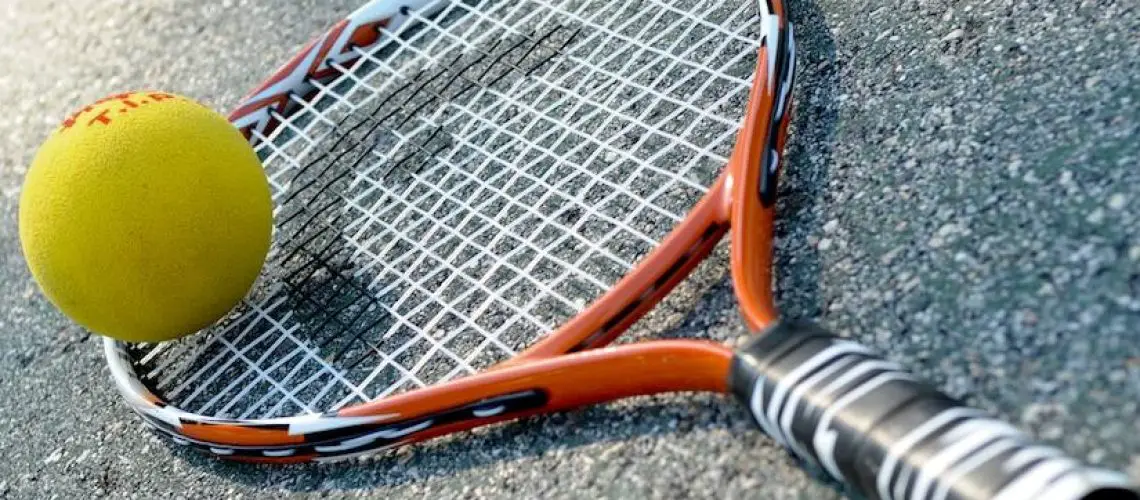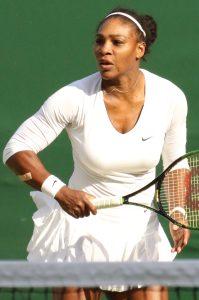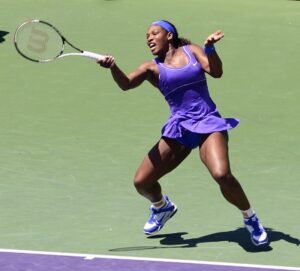We may earn money or products from the companies mentioned in this post.
Introduction to Tennis Balls for Clay Courts

When it comes to playing tennis on clay courts, using the right tennis ball is of utmost importance Not only does it impact game performance and technique, but it also plays a crucial role in preserving the court conditions Let’s delve into why choosing the appropriate tennis ball for clay courts is essential
Impact on Game Performance and Technique
The type of tennis ball used has a significant impact on game performance and technique when playing on clay courts Clay surfaces are known for their slower pace compared to other court types like grass or hard courts Therefore, using the right ball ensures that players can adapt their shots accordingly, making precise strokes with proper spin and control
A well-suited tennis ball for clay courts allows players to create optimal topspin, which helps the ball grip onto the surface and bounce higher This added bounce gives players more time to react and strategize their next move during rallies Additionally, the slower pace of play allows for longer exchanges, showcasing players’ agility, precision, and shot-making abilities
Preservation of Court Conditions
Choosing the right tennis ball also plays a vital role in maintaining the quality of clay courts Clay surfaces are delicate and require careful maintenance to ensure consistent playability over time Using improper balls can cause excessive wear and tear on the court surface, leading to uneven bounces and decreased longevity
Tennis balls specifically designed for clay courts have characteristics that minimize damage to the surface while still providing an enjoyable match experience These balls usually have a softer felt covering that reduces friction against the court’s surface, preventing excessive abrasion
Differences between Tennis Balls for Various Court Types

Tennis balls are not one-size-fits-all; different court types require different ball characteristics for optimal play While clay courts benefit from slower-paced, high-bouncing balls, other surfaces demand different attributes
For grass courts, where the surface is faster and offers less bounce, tennis balls with harder and less fluffy felt covers are preferred These balls allow for quicker shots and a lower bounce, adapting to the surface’s unique characteristics
On hard courts, which are generally medium-paced, tennis balls with standard felt covering strike the right balance These balls provide a good compromise between speed and control, allowing players to execute their shots effectively on this versatile surface
Each court type has its own challenges and demands specific ball characteristics to optimize gameplay By using the appropriate tennis ball for each court type, players can enhance their performance and make the most of their playing experience
When it comes to choosing tennis balls for clay courts, there are several factors to consider that can greatly impact your game One of the first things to look at is the type of ball construction There are two main types: pressurized and non-pressurized balls
Pressurized balls are the most commonly used in professional matches and tournaments These balls have a hollow core filled with air, which gives them a lively bounce on all court surfaces, including clay The increased pressure inside the ball allows for more power and spin during play, making them ideal for players who rely on these aspects of their game
On the other hand, non-pressurized balls do not have any internal air pressure They are typically made with solid rubber cores and provide a softer feel when hit While they may not offer as much power or spin as pressurized balls, they have their advantages on clay courts Non-pressurized balls tend to have a lower bounce and stay lower to the ground, which can be beneficial for players who prefer a flatter shot trajectory
Another important aspect to consider is the felt material and durability of the tennis ball Regular duty felt is designed for use on hard courts and provides good durability against abrasive surfaces However, on clay courts where there is less friction between the ball and the surface, regular duty felt may wear out quickly and lose its grip
In contrast, extra duty felt is specifically engineered for use on clay courts It has a thicker layer of felt that offers better resistance against wear and tear caused by sliding movements on clay surfaces The enhanced durability of extra duty felt ensures that the ball maintains its grip throughout longer matches or training sessions
Moving onto International Tennis Federation (ITF) approval – this certification plays a crucial role in tournament play and training sessions alike The ITF approval ensures that tennis balls meet certain standards regarding size, weight, bounce height, and overall performance When selecting tennis balls for clay courts, it is essential to choose ones that are ITF approved to ensure fair and consistent play
In conclusion, when choosing tennis balls for clay courts, consider the type of construction – pressurized or non-pressurized – and how they affect the bounce and feel of the ball Additionally, pay attention to the felt material and opt for extra duty felt for better durability on clay surfaces Lastly, always look for ITF approval to guarantee a high-quality playing experience
Popular Brands and Models for Clay Court Tennis Balls

Wilson Roland Garros Clay Court Tennis Balls
When it comes to popular brands for clay court tennis balls, Wilson’s Roland Garros balls are a top choice among players These tennis balls are specifically designed to excel on clay courts, providing optimal performance and durability
So what makes the Wilson Roland Garros balls suitable for clay courts? The secret lies in their construction These balls feature a premium woven felt that is specially engineered to grip the clay surface effectively This enhanced grip allows players to have better control over their shots, resulting in more accurate placement and spin on the ball
Tecnifibre X-One Tennis Balls
Tecnifibre X-One tennis balls are another popular choice among players who prefer playing on clay courts These balls offer specific features that make them ideal for this unique playing surface
One of the standout features of Tecnifibre X-One tennis balls is their high-quality felt covering, which ensures excellent consistency and durability during play The felt is designed to provide just the right amount of resistance against the roughness of clay courts, allowing players to enjoy a consistent bounce and better control over their shots
In addition, these balls boast an advanced internal pressure system that helps maintain their performance throughout extended matches or practice sessions This means you can rely on the Tecnifibre X-One tennis balls for consistent playability even after hours of intense hitting on clay courts
Dunlop Fort Clay Court Tennis Balls
Dunlop Fort Clay Court tennis balls have earned a reputation among professionals as one of the go-to choices for playing on clay surfaces Their popularity stems from several reasons that make them stand out in terms of performance and quality
One of the key factors that make Dunlop Fort Clay Court tennis balls popular is their durability These balls are built to withstand the abrasive nature of clay courts, ensuring they last longer and maintain their performance over time This durability makes them a cost-effective choice for players who frequently play on clay surfaces
Furthermore, Dunlop Fort Clay Court balls offer excellent visibility with their distinct yellow felt covering The vibrant color enhances visibility against the red clay background, allowing players to track the ball more easily during fast-paced rallies
In summary, when it comes to clay court tennis balls, brands like Wilson Roland Garros, Tecnifibre X-One, and Dunlop Fort have carved out a niche for themselves Each brand offers unique features that cater to the specific demands of playing on clay courts, ensuring an enjoyable and high-performance experience for players at all levels
Frequently Asked Questions About Tennis Balls for Clay Courts

How often should I replace my tennis balls when playing on a clay court?
When playing on a clay court, it is recommended to replace your tennis balls more frequently due to the effects of wear and tear from the surface The soft and abrasive nature of clay can quickly deteriorate the felt covering of the ball, affecting its performance As a general guideline, it is advisable to replace your tennis balls every 6-8 games or sooner if you notice a significant decrease in their bounce or visibility
Can I use regular hard-court tennis balls on a clay court?
While it is possible to use regular hard-court tennis balls on a clay court, there are potential problems associated with doing so Hard-court balls are specifically designed for faster surfaces and have a harder and more durable felt covering When used on clay, these balls may not provide optimal spin control or bounce due to their different characteristics It is recommended to use tennis balls specifically designed for clay courts to enhance your playing experience
What impact does altitude have on choosing the right ball?
The altitude at which you play can have an impact on choosing the right tennis ball High-altitude areas experience lower air density, resulting in less resistance against the ball’s movement through the air To compensate for this, high-altitude specifications are available for tennis balls which have slightly less pressure inside them compared to standard low-altitude ones Using the appropriate ball for your specific altitude will ensure better performance and control during gameplay
How can I maintain the quality of my chosen tennis ball when playing on a clay court?
To prolong the lifespan of your chosen tennis ball when playing on a clay court, there are several tips you can follow Firstly, make sure to brush off any clay residue from the ball after each use to prevent buildup and maintain its optimal performance Secondly, avoid excessive bouncing of the ball on the clay surface as this can cause additional wear and tear Finally, store your tennis balls in a cool and dry place when not in use to prevent them from absorbing moisture or becoming compressed
Useful Links

Best Tennis Balls
5 Best Tennis Balls For Clay Courts – For All Levels
Best Tennis Balls (Brand Reviews and Comparison)
Crafted for Clay
Hard Vs. Clay Court Tennis Balls
The Right Tennis Ball for the Court Surface
Tennis Balls
Best Tennis Balls For Different Surfaces 2023
Best Tennis Balls for Clay Courts
Special clay court balls | Tennispro
The Best Tennis Balls in 2023
Wilson Roland Garros Clay Court – Tennis Ball Can
4 Kinds Of Tennis Balls That You Had No Clue …
Best Tennis Balls on the Market (Durability, Match Play, Value …
Clay Court Balls : r/10s
Best Tennis Balls: The Top Picks for Your Next …
Tennis Ball Buying Guide
Dunlop Fort All Court Tennis Balls Review
6 Best Pressureless Tennis Balls + An In-Depth Product …
Types of tennis courts and their influence on ball …






